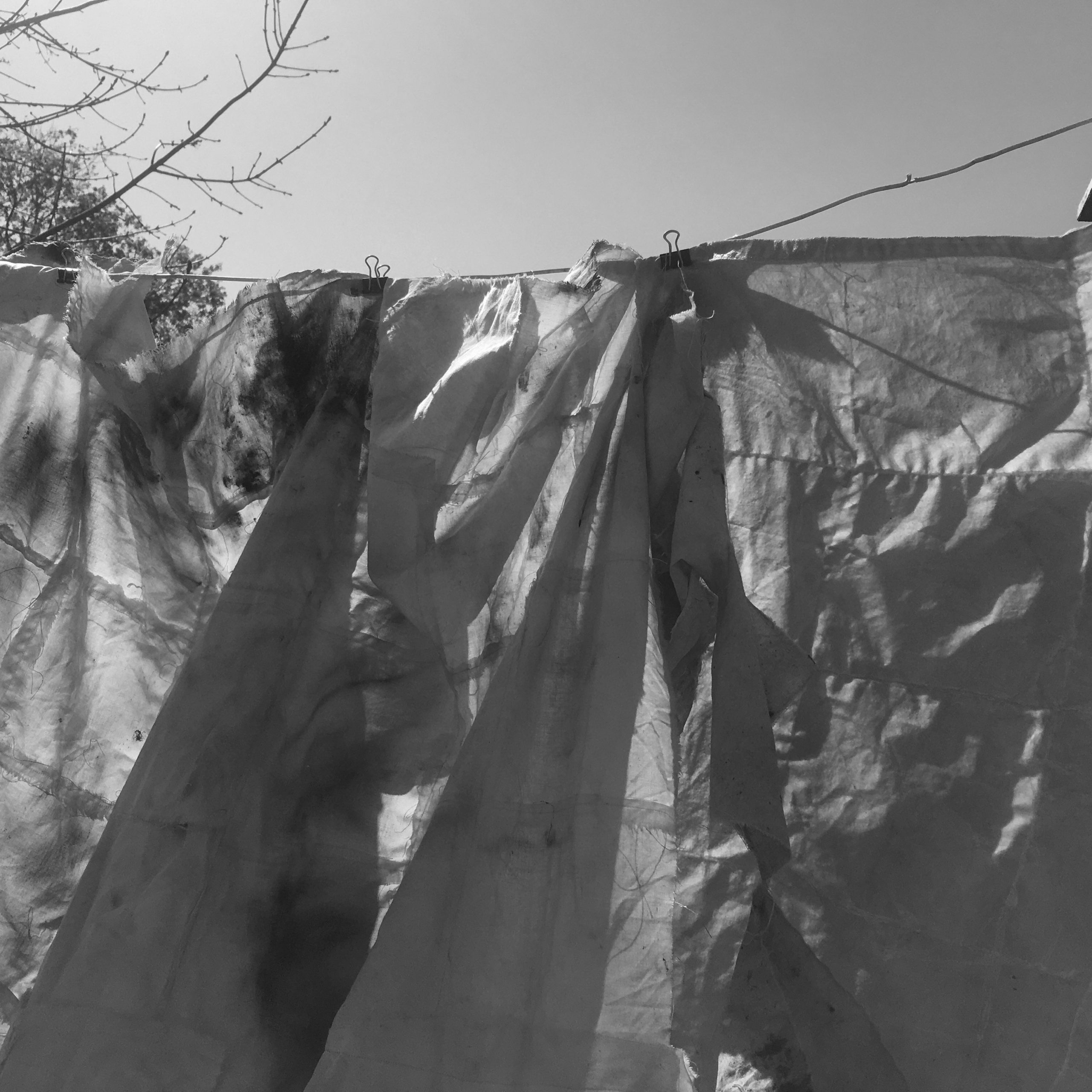Final year project
Patchwork [Read more]

Gallery washing line I
Digitally made gallery design.
Location: Loughborough University Gallery.

Washing line I

Washing line II

Washing line III

Washing line IV

Washing line V

Washing line VI
Megan Harkin
Using a combination of mass produced and non-traditional materials, I have formed accurate transliterations of patchwork quilts. My work is critical of the disparity between traditional and contemporary patchwork quilting. In an attempt to redefine this outmoded craft, I have questioned the perceived functional practicalities and traditional aesthetics of its form.
In this series, I have explored our relationship with material, testing the boundaries of what patchwork quilting can be and has become since the 16th Century. Using wax, I have preserved its structural form, using it as an archival device of historical and cultural influence, a process that has made them unusable for traditional purpose. In doing this I have challenged the domestication and narration used in patchwork, as well as explored the role of women, through looking at the maker.
The washing line is a symbolic, yet silent acclamation of the origins of the patchwork quilt, where traditionally, it was used and made in a domestic environment. The line echoes a specific muted narrative, mirroring the social change in both women and patchwork quilting.
The line also allows for movement making the work accessible to change, showing that the disparity in practice that I have noted is not a fixed representation, but instead an example of the change between traditional and contemporary patchwork.
Stains interrupt the surface of the fabric, while it's lengthy disposition allows for debris on the floor, brought in by the audience, to be gathered and claimed by the fringe of the material, formulating a new narrative informed directly by the environment. In doing this I discovered the vulnerability of material, which in turn only highlighted the vulnerability of the craft itself.
Dissertation
The ramifications of ‘non-visual’ communication strategies in the arts for a non-sighted audience
Final year project
Patchwork
Awards
'20 Diploma in Professional Studies
'20 Published in The Limit Magazine, Student Feature: 'Art That Keeps Going: Artists in Isolation', LU Arts.
Exhibitions:
'19 'Welcome Mat' Exhibition Loughborough University
'16 MTC 'Perpetual Flux' Exhibition Coventry
'16 Artrix 'Final Major Project' Exhibition Bromsgrove.
Experience
'16-'17 Media Representative at Loughborough University Halls of Residence
'16-'17 Volunteer at Charnwood Arts Loughborough
'16 Activities Assistant at Birmingham Museum and Art Gallery
Placements
September 2018 - July 2019
Learning Support Assistant, The Royal National Institute of Blind People